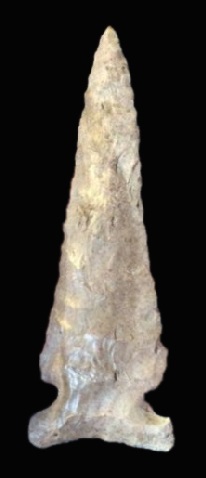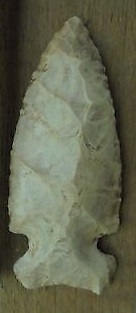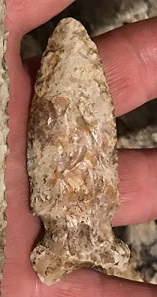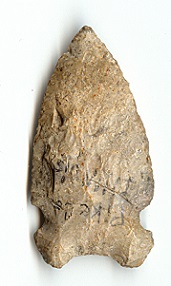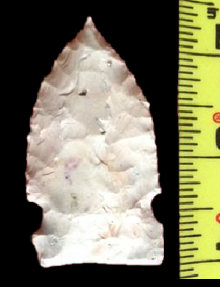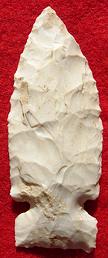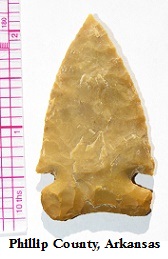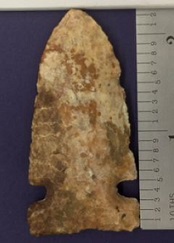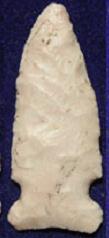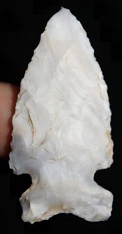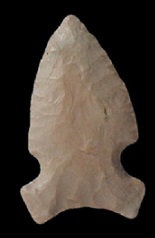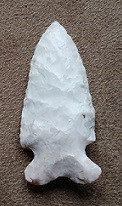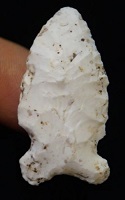Outline is Representative of Size and Shape:
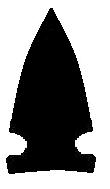
Name Details:
Identified By: Edward G. Scully
Named For: Type Site
Date Identified: 1951
Type Site: Hemphill site, Brown County, Illinois
Identified By: Edward G. Scully
Named For: Type Site
Date Identified: 1951
Type Site: Hemphill site, Brown County, Illinois
Point Validity:
Valid type
Scully is a highly respected anthropologist from the University of Michigan who conducted extensive research in the Mississippi River valley and identified many different types of projectile points. This type was named in a professional publication and has many professional references. This is considered a valid type.
Scully is a highly respected anthropologist from the University of Michigan who conducted extensive research in the Mississippi River valley and identified many different types of projectile points. This type was named in a professional publication and has many professional references. This is considered a valid type.
Description of Physical Characteristics and Flaking Pattern:
This is a medium to large triangular side notched point with a flattened cross section. The blade is primarily excurvate. Some examples may have parallel sides. Many examples have fine serrations. This point has broad parallel notches low (commonly located at the bottom 1/8th of the blade. The basal ears continue the curvature of the blade. The base may range from straight to concave. This point has a random flaking pattern with many examples having a high quality of workmanship.
Size Measurements:
Total Length - 50 to 230 mm (average 55 to 65 mm), Hafting / Stem Length - 12 to 20 mm, Blade / Stem Width - 25 to 40 mm, Neck Width - 20 to 27 mm
Total Length - 50 to 230 mm (average 55 to 65 mm), Hafting / Stem Length - 12 to 20 mm, Blade / Stem Width - 25 to 40 mm, Neck Width - 20 to 27 mm
Commonly Utilized Material:
Additional Comments:
These points are similar to the newer Osceola point, but these points generally has a higher quality of workmanship and greater in size than usually seen in Osceola points. Osceola points are associated with the Old Copper Culture and the Hemphill points are associated with the Red Ocher culture (Perino, 1971)
These points are similar to the newer Osceola point, but these points generally has a higher quality of workmanship and greater in size than usually seen in Osceola points. Osceola points are associated with the Old Copper Culture and the Hemphill points are associated with the Red Ocher culture (Perino, 1971)
Distribution: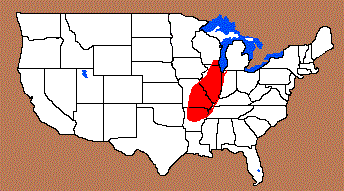
Distribution Comments:
These points are primarily found in the lower Illinois River Valley and into the middle Mississippi River Valley and the lower Missouri River valley. Distribution extends into Wisconsin and westward into the Jefferson City region of Missouri. Frequency decreased southward into Arkansas.
These points are primarily found in the lower Illinois River Valley and into the middle Mississippi River Valley and the lower Missouri River valley. Distribution extends into Wisconsin and westward into the Jefferson City region of Missouri. Frequency decreased southward into Arkansas.
Age / Periods:
Date: 4,500 - 3,000 B.P.
Cultural Period: Middle to Late Archaic
Glacial Period: Neoglacial
Culture: Red Ocher Culture
Date: 4,500 - 3,000 B.P.
Cultural Period: Middle to Late Archaic
Glacial Period: Neoglacial
Culture: Red Ocher Culture
Age Details:
Similar Points:
Howard County, Logan Creek, Meadowood, Osceola, Otter Creek, Rowan, White River, Turin
Howard County, Logan Creek, Meadowood, Osceola, Otter Creek, Rowan, White River, Turin
Other points in this cluster / Related / Associated Points:
Big Sandy ,Cache River Godar, Graham Cave, Greenbrier, Howard County, Madison Side Notch, Osceola, Osceola Greenbrier, Raddatz, Simonsen
Big Sandy ,Cache River Godar, Graham Cave, Greenbrier, Howard County, Madison Side Notch, Osceola, Osceola Greenbrier, Raddatz, Simonsen

